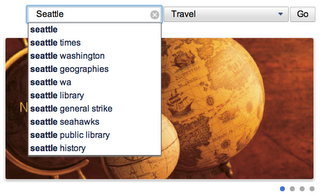Tuesday, June 28, 2011 at 10:03 AM
Posted by Ariel Levine, Google eBooks Support TeamPioneering journalist Belva Davis recently visited Google as part of the Authors@Google program to talk about her memoir, Never in My Wildest Dreams: A Black Woman's Life in Journalism.
Davis was interviewed by Google director Stacy Brown-Philpot, who asked her questions about her career, being black in America, technology's impact on the media, and her hopes for the future.
During her career Davis anchored at three major network affiliates, CBS, NBC and PBS, and currently hosts a highly respected political affairs program on KQED-TV in San Francisco. She has interviewed icons such as Malcolm X, Frank Sinatra, James Brown, Alex Haley, Dianne Feinstein, Fidel Castro and Condoleezza Rice. During her interview at Google, Davis said that she would like to add President Barack Obama to this list.
When asked how she started her career, Davis pointed to the Republican National Convention of 1964. She explained that it was during that convention where she saw how the mainstream media shaped public opinion and perpetuated racism.
Seeing the media's power to tell a story of hatred to America inspired her to try to tell a different story, "I thought to myself... I want to do something like that... I want to be able to tell people what happens to us. No one is truly interested in what happens to us if we don't tell our own story."
Something that surfaced during the conversation was how important it is to continue telling your story, even after you think you've broken down a wall. Asked if she thought being black in America has changed since the 1960s, Davis said it had, but this did not mean that people should stop working toward change:
It's like two different worlds for black Americans today. There is the group we dreamed of, that people fought for, march for... And then there is the other world, where unemployment is higher than it's ever been, where poverty is at an unmeasurable amount, where walls are so high that some don't see that they can climb over them.In her book Davis recounts where she was the night that Barack Obama won the 2008 Presidential election, and her initial hesitation to celebrate. Once she realized his success was real and being acknowledged, she was unable to control herself and had to share her experiences. She spoke about her experience of America in the 1960s, and the miracle she felt Obama's election was. And yet, always the journalist, Davis admits:
So as a country we need to do more, but as a people there is no denying that the world is totally different: When I was starting in this business, I was often asked to leave news conferences because no one could believe I was a real legitimate reporter. Today the president of the country is black.
Deep down, I suspect that this glorious glow will fade into a more complex reality. Every progressive step in America seems to evoke its own backlash. In the same way that Brown v. Board of Education and passage of the Civil Rights Act helped spawn the reactionary rhetoric of the Goldwaterites, so too will Obama's election trigger angry Tea Party movement protesters brandishing him "un-American" and clamoring to take their country "back."Ultimately, Never in My Wildest Dreams, is about not giving up. Davis points out that we are living in a time when young people are throwing up their hands and abandoning their dreams. Davis wanted to let anyone who has thought of giving up that there "are rewards for hanging in there, for having wild dreams, for envisioning yourself as whatever it is that you think will make you happy."
Yes I choose to remain hopeful. Over the years I've followed my mantra--a note I wrote to myself years ago. Its message applies to the fate of Belvagene Metlon Davis Moore from hardscrabble Louisiana, and to the Obamas and Oprahs and Christophers of the world, and to all who follow the arch of history as it blends toward justice. It begins like this: "Don't be afraid of the space between your dreams and reality" (16).
She writes, "If you can somehow along the way convince yourself to do the work that it takes to get where you want to go, then there you are."











